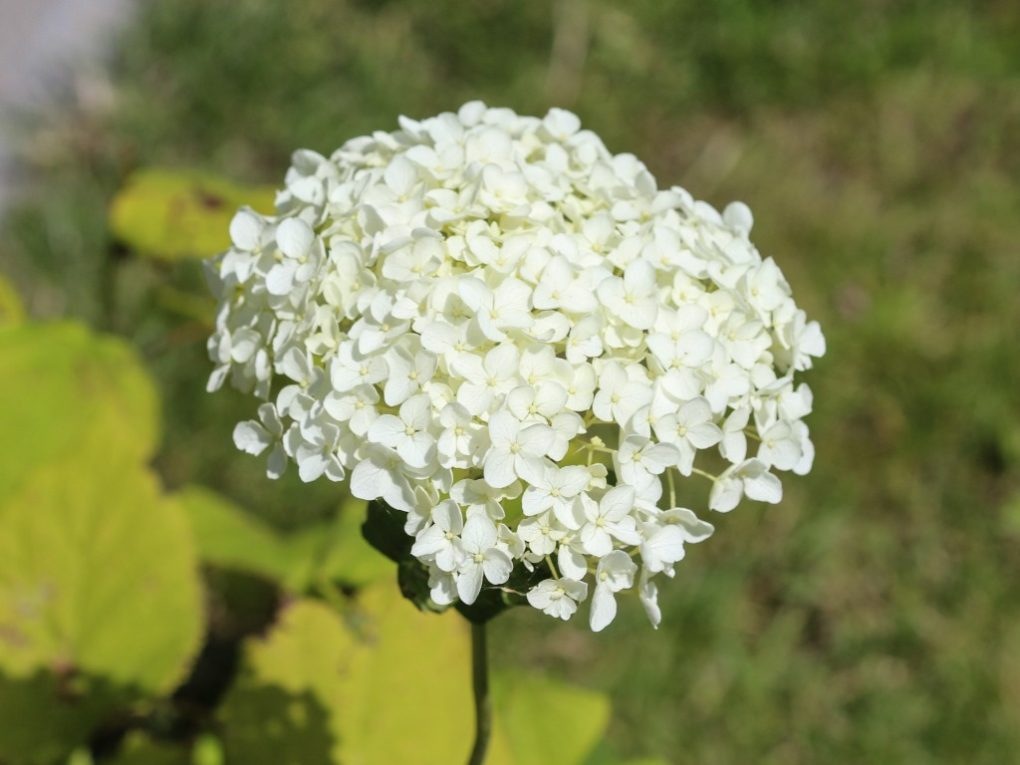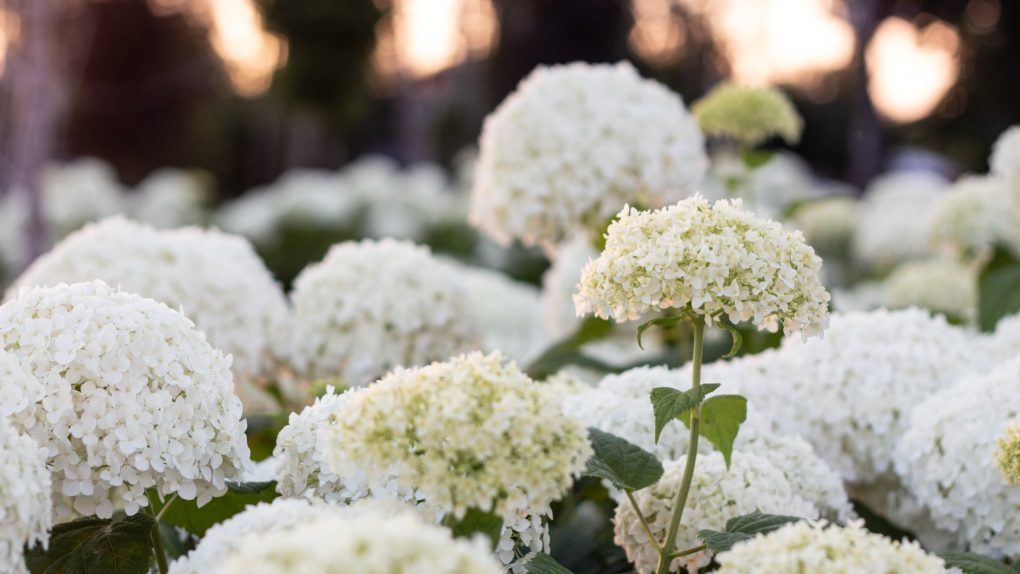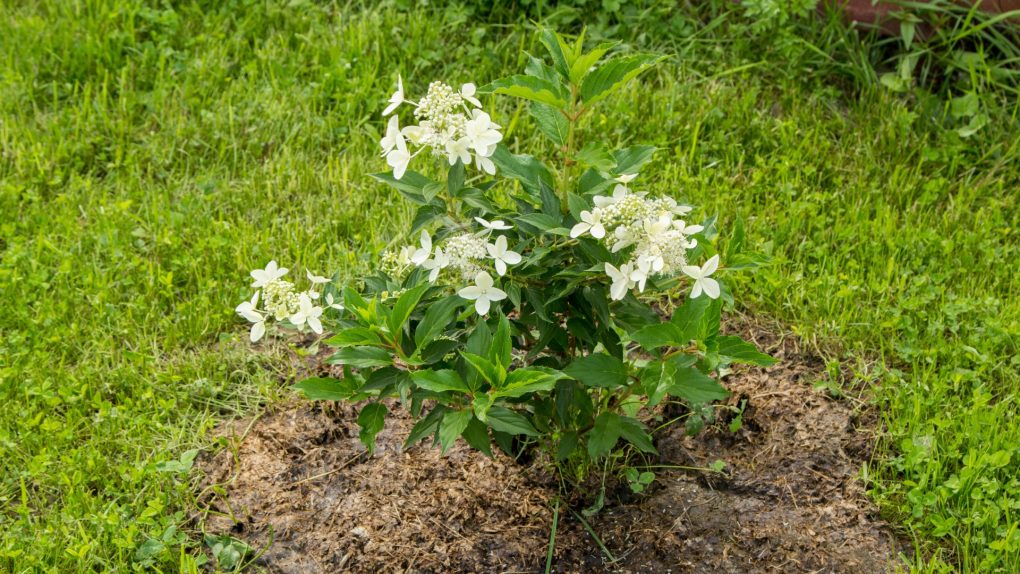Can Annabelle Hydrangea Thrive in Full Sun?
Annabelle Hydrangea (Hydrangea arborescens ‘Annabelle’) can tolerate full sun but generally thrives better in partial shade. Planting it in an area that receives morning sun and afternoon shade is highly advised.
This preference for partial shade is because intense sunlight, especially during hot summer afternoons, can lead to wilting, leaf burn, and reduced flower quality. Providing some afternoon shade can help the plant maintain adequate moisture levels, prevent stress, and ultimately ensure healthier growth and more prolific blooms.

Table of Contents
Lighting Requirements of Annabelle Hydrangea
The lighting requirements of Annabelle Hydrangea are an important aspect to consider when cultivating and maintaining these beautiful flowering plants. Providing the right amount of light ensures their optimal growth and vibrant blooms. Here are some key points to keep in mind:
Amount of Sunlight
Annabelle Hydrangeas thrive in partial shade or filtered sunlight conditions. They prefer to receive direct sunlight for a few hours in the morning or late afternoon while shielding themselves from the intense midday sun. Therefore, it is important to balance providing enough sunlight for healthy growth and preventing the plants from getting scorched or dehydrated.
Ideal Location
When choosing a location for your Annabelle Hydrangeas, opt for areas with spotty shade or where they can be protected from the harsh afternoon sun. This can be achieved by placing them under the canopy of larger trees or near structures that provide some shade during the hottest parts of the day.
Avoiding Full Sun Exposure
Annabelle Hydrangeas are sensitive to intense, direct sunlight, particularly in hot climates. Excessive exposure to full sun can lead to wilting, leaf scorch, and stunted growth. If you live in an area with a lot of sun, it is best to provide shade or consider growing the plants in containers that can be moved to more suitable locations.

Assessing Light Levels
Observe their foliage and blooms to determine if your Annabelle Hydrangeas are receiving the right amount of light. If the leaves appear pale or yellowish, it may indicate that the plants are not receiving enough sunlight. On the other hand, if the leaves are getting scorched or the blooms are fading quickly, it could be a sign of excessive sunlight exposure.
Supplemental Lighting
In situations where the available natural light is limited, consider using supplemental lighting to ensure the optimal growth of your Annabelle Hydrangeas. LED grow lights are popular as they provide the necessary light spectrum without producing excessive heat. Place the lights at an appropriate distance to mimic the intensity of filtered sunlight.
Remember, striking the right balance of light for your Annabelle Hydrangeas is crucial to their overall health and success. By providing the ideal lighting conditions, you can enjoy a bountiful display of beautiful, lush blooms year after year.
Risk of Excessive Sunlight for Annabelle Hydrangea
The Annabelle Hydrangea, a popular flowering plant known for its stunning white blooms, can bring beauty and charm to any garden or landscape. However, it is important to be aware of the potential risks associated with exposing this delicate plant to excessive sunlight.
1. Impact of Direct Sunlight
Direct sunlight can be detrimental to the health and well-being of Annabelle Hydrangea. While these plants require some sunlight to thrive, prolonged exposure to intense sunlight can cause significant damage. The intense heat and UV radiation from the sun can lead to the following issues:
● Leaf Scorch: Annabelle Hydrangea leaves may develop brown, dry patches or edges when exposed to excessive sunlight. This condition, known as leaf scorch, is a result of the plant losing more water through transpiration than it can absorb.
● Reduced Bloom Size: Too much sun can negatively affect the size and quality of the hydrangea’s blooms. Instead of the expected large and full flower heads, excessive sunlight may result in smaller, less vibrant blooms.
● Faster Flower Fading: Annabelle Hydrangea blooms exposed to intense sunlight may fade more quickly than those in partial shade. The flowers may lose their pristine white color and prematurely turn a dull, yellowish hue.
2. Prevention and Mitigation
To protect your Annabelle Hydrangea from the risks of excessive sunlight, it is crucial to take proactive measures:
● Partial Shade: Planting the Annabelle Hydrangea in an area that receives partial shade during the hottest day can help shield it from intense sunlight. This can be achieved by choosing a location under a tree canopy or providing artificial shading using umbrellas or shade cloth.
● Mulching: Applying a layer of organic mulch around the base of the hydrangea can help conserve soil moisture and regulate the plant’s temperature. This will reduce the likelihood of leaf scorch and water stress caused by excessive evaporation.

● Watering: Regular and adequate watering is essential for the overall health of Annabelle Hydrangea. During hot and dry periods, it is important to ensure the plant receives enough water to compensate for increased moisture loss due to sunlight exposure.
